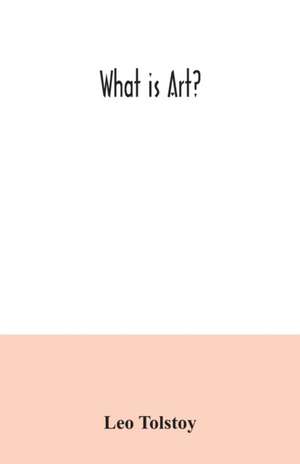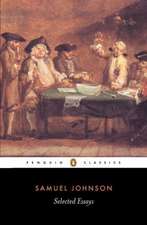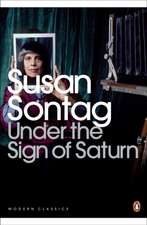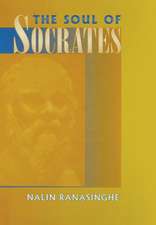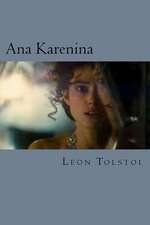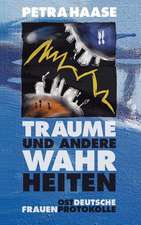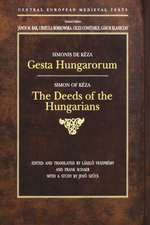What is art?
Autor Leo Tolstoyen Limba Engleză Paperback – 3 iul 2020
| Toate formatele și edițiile | Preț | Express |
|---|---|---|
| Paperback (5) | 52.62 lei 24-30 zile | +18.16 lei 4-10 zile |
| Penguin Books – 30 aug 1995 | 52.62 lei 24-30 zile | +18.16 lei 4-10 zile |
| Hackett Publishing Company – oct 1996 | 88.03 lei 3-5 săpt. | |
| Bloomsbury Publishing – 24 feb 2016 | 128.12 lei 3-5 săpt. | |
| BLURB INC – 8 ian 2019 | 95.74 lei 17-23 zile | |
| Alpha Editions – 3 iul 2020 | 111.01 lei 6-8 săpt. |
Preț: 111.01 lei
Nou
Puncte Express: 167
Preț estimativ în valută:
21.24€ • 22.04$ • 17.76£
21.24€ • 22.04$ • 17.76£
Carte tipărită la comandă
Livrare economică 17-31 martie
Preluare comenzi: 021 569.72.76
Specificații
ISBN-13: 9789354034763
ISBN-10: 9354034764
Pagini: 280
Dimensiuni: 140 x 216 x 17 mm
Greutate: 0.4 kg
Editura: Alpha Editions
ISBN-10: 9354034764
Pagini: 280
Dimensiuni: 140 x 216 x 17 mm
Greutate: 0.4 kg
Editura: Alpha Editions
Notă biografică
Count Lev Nikolayevich Tolstoy 9 September [O.S. 28 August] 1828 - 20 November 1910), usually referred to in English as Leo Tolstoy, was a Russian writer who is regarded as one of the greatest authors of all time. He received multiple nominations for the Nobel Prize in Literature every year from 1902 to 1906, and nominations for Nobel Peace Prize in 1901, 1902 and 1910, and the fact that he never won is a major Nobel prize controversy. Born to an aristocratic Russian family in 1828,[3] he is best known for the novels War and Peace (1869) and Anna Karenina (1877), often cited as pinnacles of realist fiction. He first achieved literary acclaim in his twenties with his semi-autobiographical trilogy, Childhood, Boyhood, and Youth (1852-1856), and Sevastopol Sketches (1855), based upon his experiences in the Crimean War. Tolstoy's fiction includes dozens of short stories and several novellas such as The Death of Ivan Ilyich (1886), Family Happiness (1859), and Hadji Murad (1912). He also wrote plays and numerous philosophical essays. In the 1870s Tolstoy experienced a profound moral crisis, followed by what he regarded as an equally profound spiritual awakening, as outlined in his non-fiction work A Confession (1882). His literal interpretation of the ethical teachings of Jesus, centering on the Sermon on the Mount, caused him to become a fervent Christian anarchist and pacifist.[3] Tolstoy's ideas on nonviolent resistance, expressed in such works as The Kingdom of God Is Within You (1894), had a profound impact on such pivotal 20th-century figures as Mahatma Gandhi[9] and Martin Luther King Jr.[10] Tolstoy also became a dedicated advocate of Georgism, the economic philosophy of Henry George, which he incorporated into his writing, particularly Resurrection (1899).
Cuprins
What Is Art? - Leo Tolstoy Translated by Richard Pevear and Larissa Volokhonsky with a Preface by Richard Pevear
Preface Bibliographical Note A Note on the Text
WHAT IS ART?Appendix I Appendix II Notes
Descriere
Descriere de la o altă ediție sau format:
During the decades of his world fame, Tolstoy wrote this series of essays and polemics on issues of morality, social justice and religion. He considered and rejected the idea that art reveals and reinvents through beauty, although he perceived the question of art to be a religious one.
During the decades of his world fame, Tolstoy wrote this series of essays and polemics on issues of morality, social justice and religion. He considered and rejected the idea that art reveals and reinvents through beauty, although he perceived the question of art to be a religious one.
Caracteristici
Includes a detailed introduction which contextualizes the work and draws out significant events in Tolstoy's life that affected his writing of the book
